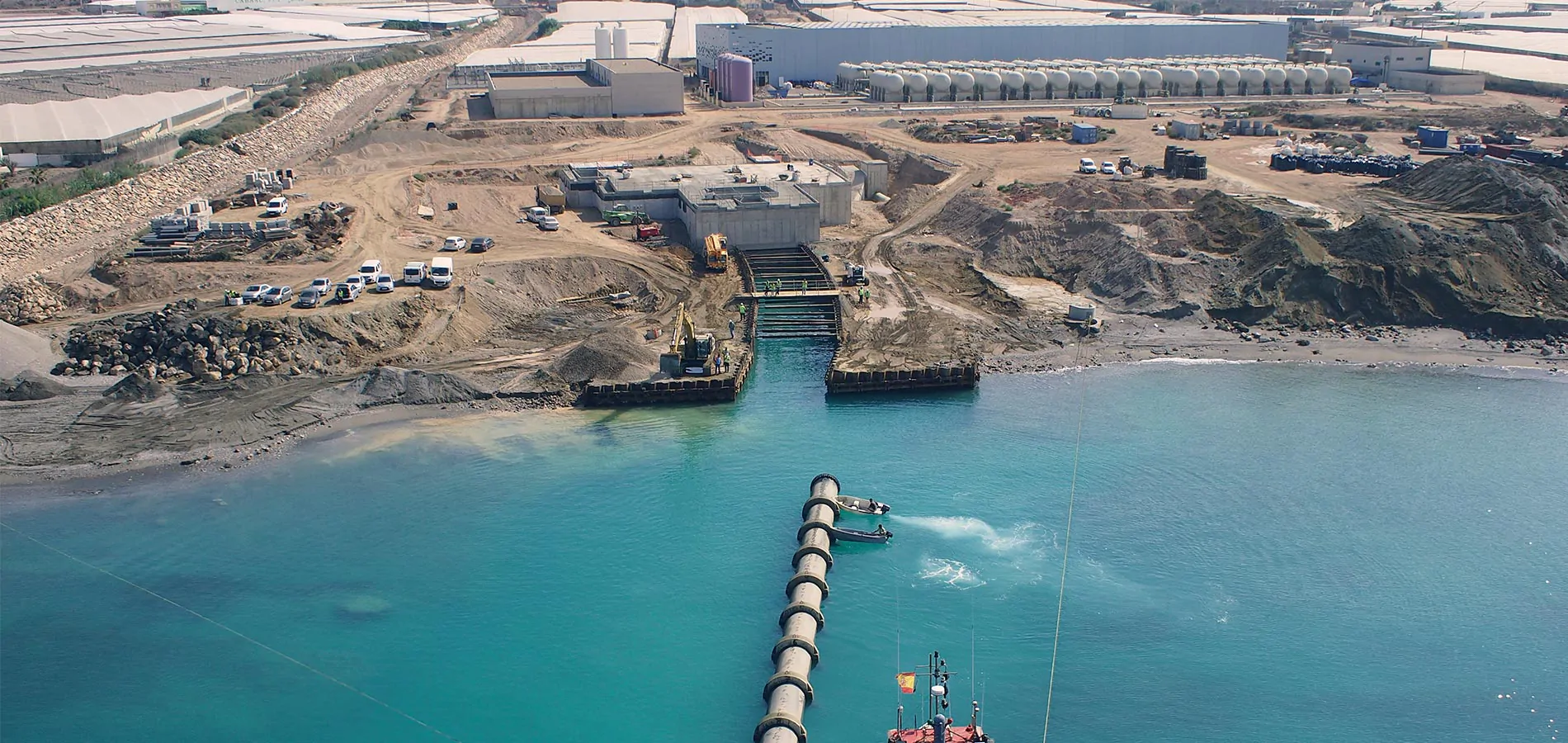Water is at the epicentre of sustainable development, at the heart of socio-economic development, climate change adaptation, health, disease prevention, ecosystem protection, and human survival.
In planning and managing this increasingly scarce water resource, managing the integral water cycle is critical in eliminating polluting discharges into the natural environment, guaranteeing access to water and conserving aquatic ecosystems.
At Sando Agua, we specialise in offering solutions in each of the phases of the integral water cycle: Collection, treatment, distribution, sanitation and purification, decarbonisation and waste management and recovery.. These phases include constructing drinking water treatment infrastructures, distribution networks, sewerage networks, wastewater treatment plantsdesalination plants, etc. They also include chemical, technological, energy use or transversal data analysis activities aimed at the technical operation of the infrastructures the quality and flow of water, to minimise its loss in distribution or avoid contamination.
With almost five decades of experience in hydraulic works, we are working to make the Sando Agua brand a benchmark for innovation in the sector.
In line with its innovation DNA, Sando Agua adopts the technological perspective as the cornerstone of its operations, integrating the SmartwaterCycle into its water infrastructure management.. CycleSmartwater is an innovative approach to water management and governance based on integrating advanced information and communication technologies (ICT) to collect real-time data and use it to optimise water management.
By integrating this approach, Sando Agua will implement technology such as IoT (Internet of Things) devices or sensors to collect data on water quality and quantity in real time at each stage of the water cycle.
The application of sensors allows the measurement of multiple parameters such as temperature, pressure, flow, water quality (pH, turbidity, conductivity, etc.), and other aspects that enable intelligent cycle management through real-time monitoring of the system’s state. The data collected by the sensors is sent to a central platform, where it is processed and analysed using artificial intelligence and machine learning algorithms on the entire water management cycle and its performance. In this way, informed decisions can be made, and the water management system can be adapted in real-time to optimise its use and minimise the impacts resulting from breakdowns, breakages or problems at every stage.
The commitment to a smart water approach allows Sando Agua to position itself at the technological forefront in managing the integral water cycle, contributing to the Sustainable Development Goals through two aspects: the integration of technology for efficiency in line with SDG 9 “Industry, Innovation and Infrastructure” and improving water quality by reducing pollution and discharges concerning SDG 6 “Clean water and sanitation”.
R&D&i
Sando also implements R&D&i projects focused on improving the efficiency of these structures by improving aspects related to environmental impact These research projects include the ATMOSFERIC project and the PREDICTEDAR project.
The ATMOSFERIC project aims to generate an odour management system for the activity of a WWTP.. The system uses odour dispersion software fed by dynamic olfactometry and meteorology stored on its server. In this way, the aim is to create a versatile system that can be easily modified according to the new processes introduced in the WWTP or the evaluation of the odour emission of the different sources present in the installation. The aim is, on the one hand, to improve the welfare of the population living close to the installations and, on the other hand, to justify the origin of the emission sources during odour episodes.
The PREDICTEDAR project aims to develop new technology and design an intelligent predictive maintenance system for critical urban wastewater treatment components. This artificial intelligence is inspired by the needs of the sector’s processes and services, detecting the points of possible improvement of the WWTP (Wastewater Treatment Plant), thus allowing more efficient use of its resources.
This project thus makes it possible to minimise operational risks and unforeseen events, reduce needs and costs, study the main technical limitations, and even increase the insufficiency ratios of a WWTP It also sets an example in developing new technologies that favour the circular economy and the sustainable use of resources, reducing energy consumption and demonstrating Sando’s capacity for innovation and technology to its investors and customers.
Also noteworthy is the RECONLOD project, a research project focused on effectively integrating the circular economy in water treatment processes. This project aims to restore spaces that have been degraded by developing construction-related activities with the application of innovative techniques. Sludge from a wastewater treatment plant is used, inoculated with biological crust-forming cyanobacteria and native plants are selected to maximise runoff water capture.

Integral water cycle
Ensuring sustainable water circularity
Integral water cycle
We act efficiently and innovatively at every step of the complete water cycle
We manage the complete water cycle by developing constructive solutions in each phase with Sando Agua integrating smart water technology to make real-time forecasts of water quality or possible incidents in the sewerage network